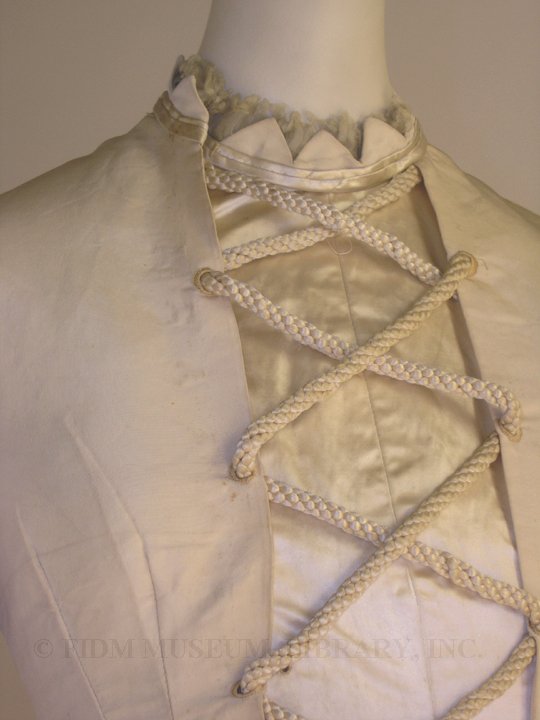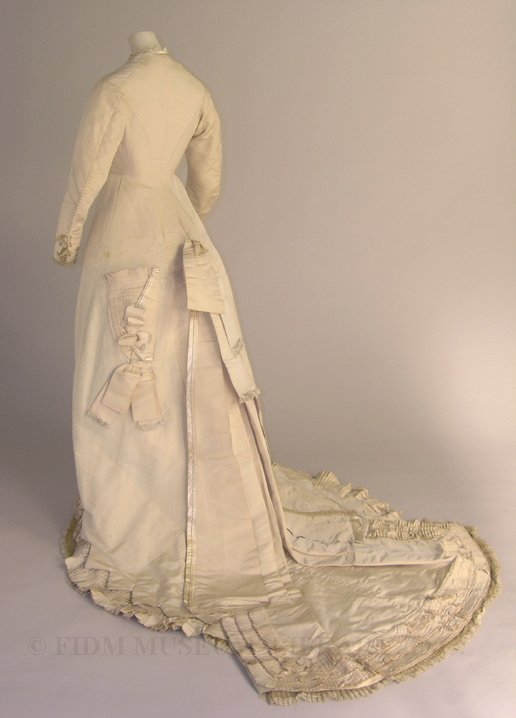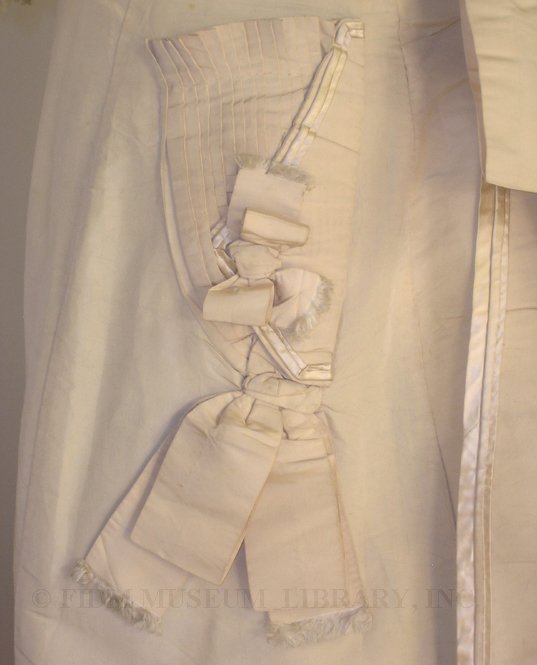1870s Wedding Dress
If you are a regular reader of this blog, you almost certainly believe that sartorial choices are made by individuals to create aspirational versions of themselves, i.e. you dress in the fashion of the person you want, or believe yourself, to be. Given that belief, what do you think this Victorian-era wedding gown might reveal about its wearer?
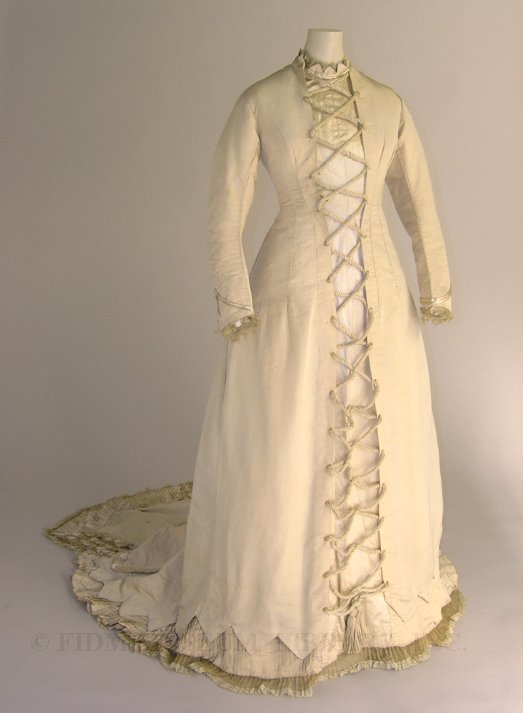
Wedding gown
1877-78
Gift of the Helen Larson Estate
2001.31.4
The most striking visual aspect of this silk dress is the lacing which stretches from the collar to the hem. Almost immediately, the lacing of a corset is brought to mind. This association would have been obvious in the 1870s too, as most corsets of the era laced up the back. This suggestion of undress creates a tension when contrasted with the impression of restraint and propriety implied by the long sleeves, high-collar and train. Given that this was worn as a wedding dress, the obvious tension between conceal and reveal becomes extremely intriguing. Both modest and exhibitionistic, this would have been quite a wedding dress indeed!
Before you suggest that the FIDM Museum wedding dress is an oddity, take a close look at the image below, which appeared on the cover of Harper's Bazar on August 11, 1877. This "sea-side toilette" shares the center front lacing and also features a heavy silk cord draped around the hips. Actually two garments, the darker colored skirt and sleeves are of a "mandarin yellow silk" while the laced over-garment is a "sleeveless polonaise" of white cashmere. The polonaise is trimmed in black velvet ribbon embroidered in green, yellow and red arabesques. The accompanying parasol is also of mandarin yellow silk, lined with white and topped with yellow flowers.
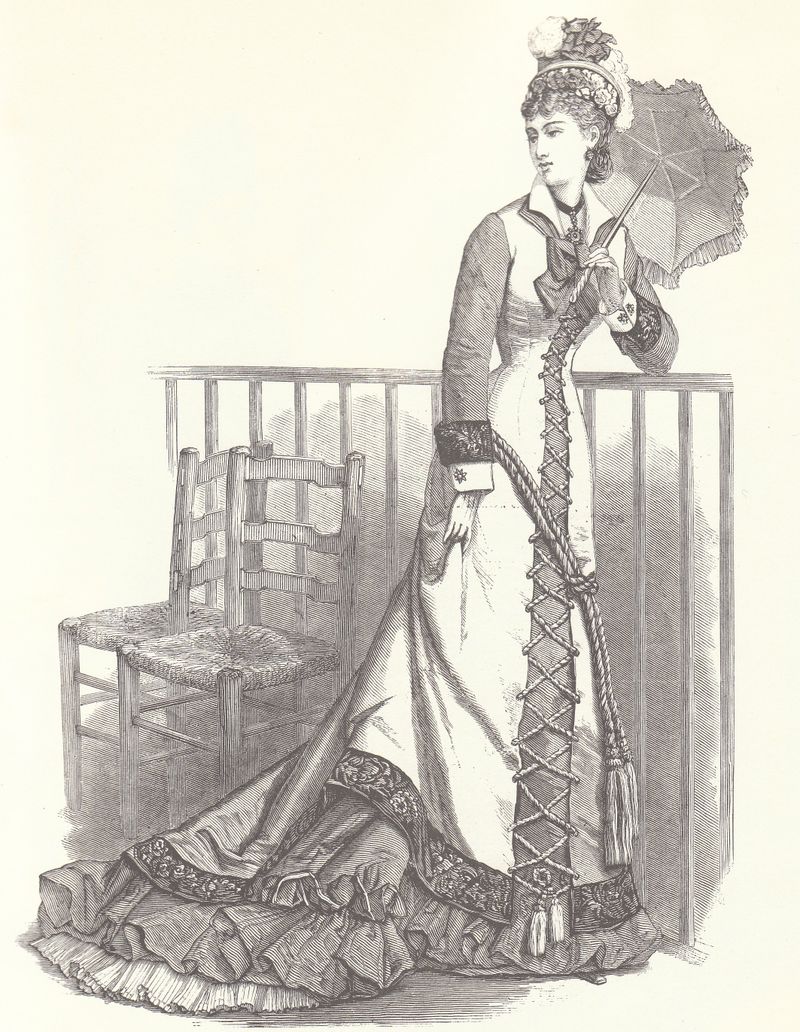 Reprinted from Victorian Fashions & Costumes from Harper's Bazar: 1867-1898. p.106.
Reprinted from Victorian Fashions & Costumes from Harper's Bazar: 1867-1898. p.106.
This wedding dress came to the FIDM Museum as part of a collection which once belonged to the British dress and textile collector Doris Langley Moore (1902-1989). In Moore's book The Woman in Fashion, a chronological history of fashion from 1800-1927, our wedding gown is worn by ballerina Marjorie Tallchief. Though the practice of dressing live models in historic garments is no longer condoned by museum professionals, it was once common among both collectors of historic dress and museums. Garments from Moore's extensive collection are now part of many dress/textile collections in the UK and the United States. If you know of any objects in museum collections associated with Doris Langley Moore, drop us a line as we'd love to know!
